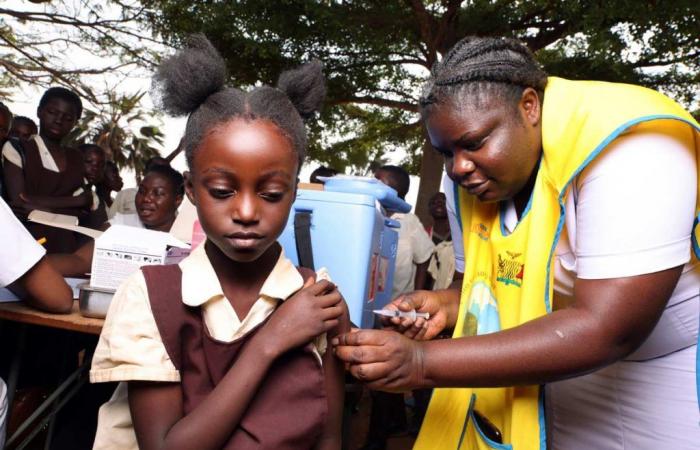The rollout of HPV vaccines is a crucial step in the global fight against cancer. These safe and highly effective vaccines prevent infection with the most dangerous forms of human papillomavirus (HPV). In countries with high vaccination coverage, a decrease in infection rates among young women has already been observed. Cervical cancer cases are expected to decrease significantly as these women age.
However, this does not mean the end of cervical cancer screening programs. These programs remain essential to protect unvaccinated women and to further reduce the risks for those who have been vaccinated. Nonetheless, the nature of screening is evolving, with less frequent and more convenient testing expected to become the norm in the coming years.
Protection strategy
Current HPV vaccines target high-risk forms of the virus, including HPV-16 and HPV-18 strains, which cause 70% of cervical cancers. Although new vaccines are being introduced to protect against other strains, none cover all types of HPV associated with cancer. Cervical cancer screening therefore remains recommended for young women, even those who have been vaccinated.
Screening is even more crucial for women who have not had the opportunity to be protected by vaccination, because they continue to be at risk of developing cervical cancer during their prime years. productive. In this context, Emily Kobayashi, head of the HPV vaccine program at Gavi, the Vaccine Alliance, emphasizes that “screening and treating precancerous lesions can prevent them from developing a debilitating, painful and often fatal cancer. »
Modern screening
The nature of cervical cancer screening is changing thanks to recent innovations that make this life-saving procedure easier and more affordable.
Traditionally, screening involved either sending a sample of cells to a laboratory for visual inspection for abnormalities or directly examining the cervix after applying a solution of acetic acid or iodine. Today, more countries are adopting HPV testing as a primary screening method, as they look for DNA fragments of high-risk HPV types in cervical cells. These tests help identify women at greatest risk of developing cancer. People who test positive can then undergo confirmatory testing using more traditional methods. HPV DNA-based screening tests have been shown to be more effective in preventing cervical cancer and are more cost-effective than older methods. They are also suitable for all contexts, regions and countries.
Additionally, because HPV tests have a lower false negative rate, they are less likely to falsely reassure women that they are not at high risk. Therefore, these may require less frequent screening. If an HPV test does not detect high-risk HPV, the chances of a person developing cervical cancer in the next five years are very low.
International directions
Although recommendations regarding the timing and frequency of cervical cancer screening vary by country, the World Health Organization (WHO) currently recommends HPV DNA detection as the primary screening method. . For the general population, the WHO recommends starting from the age of 30, with regular tests every five to ten years. For women living with HIV, screening should begin at age 25, with frequency every three to five years.
Some research suggests that the frequency of screening among women vaccinated against HPV may be reduced to two or three times over their lifetime. However, it is important to note that the majority of girls worldwide do not yet have access to the HPV vaccine. Because screening begins 15 to 20 years after vaccination, it could take decades before the majority of women eligible for screening are vaccinated. The WHO Global Strategy to Eliminate Cervical Cancer therefore recommends a minimum of two lifetime screenings, with a high-performance HPV test, the first at age 35 and the second at age 45.
Scientific modeling has shown that such screening, combined with follow-up treatment if precancerous changes are detected, could lead to a 97% reduction in the incidence of cervical cancer in low-income countries. and intermediate over the next century, compared to an 89% reduction achieved by vaccination alone.
Futures innovations
Other changes could transform cervical cancer screening, including the ability for women to collect their own samples in complete confidentiality, without having to visit a clinic. The use of self-collected menstrual blood or urine samples to detect the presence of high-risk HPV is even being considered. These innovations could help overcome some cultural and logistical barriers to widespread screening, further reducing cervical cancer rates.
Regarding treatment, lightweight thermal ablation devices are now available. These devices use a heated probe to destroy precancerous cells and tissue on the surface of the cervix. Thermal ablation is increasingly being adopted in low- and middle-income countries because it does not require the transportation and maintenance of tanks of compressed carbon dioxide or nitrous oxide, used in cryotherapy – a older treatment that involves freezing precancerous cells and tissues. In addition, thermal ablation can be performed in 5 minutes, compared to 15 minutes for cryotherapy.
“When we talk to cancer advocates, and especially cervical cancer survivors, they are excited to support the vaccine rollout to protect future generations,” says Kobayashi. “However, they also urge us not to neglect adult women. This is why we encourage countries to communicate the importance of HPV vaccination for girls aged 9 to 14 while emphasizing the essential role of screening among adult women.
“This is also why we are working with Unitaid to support a project to generate knowledge on how integrated social mobilization for vaccination and HPV testing can drive uptake of both measures. »






